Where will young voters impact the 2022 elections?
Top 10 States and Districts
by Youth Electoral Significance
Parties and other political groups often overlook the votes and energy of young people, even where youth can have a decisive influence on the outcome of the race. CIRCLE is providing data-driven insights about the states and districts where youth are poised to have a disproportionately high electoral impact in 2022 — if campaigns and organizations invest in engaging them.
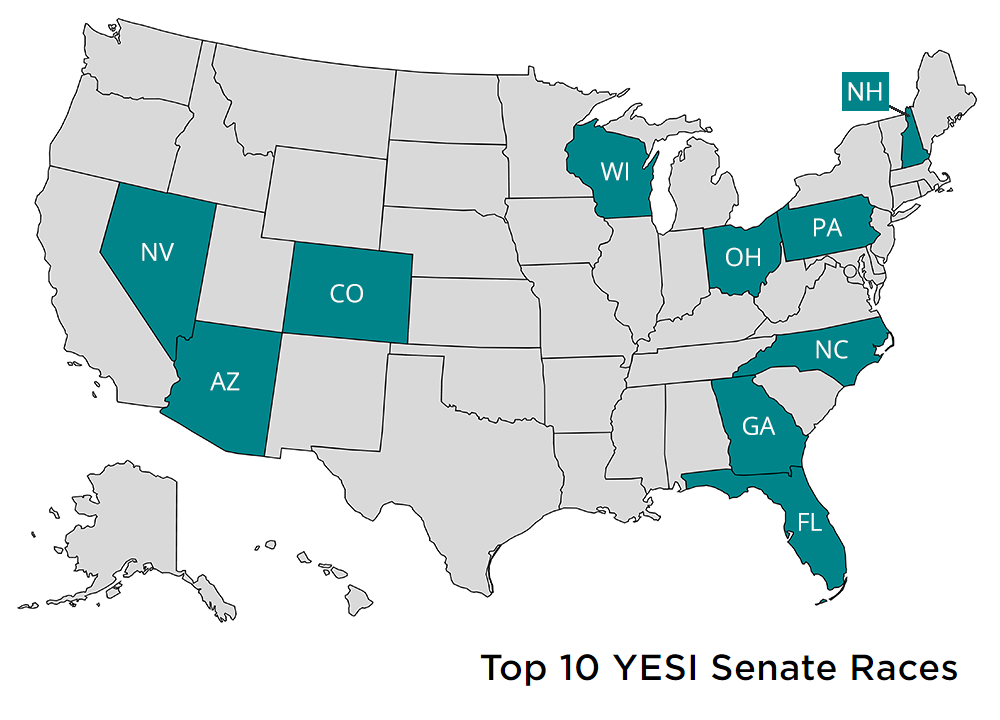
Two extremely close run-off elections in Georgia decided control of the Senate in 2020, and the race for Democratic Senator Raphael Warnock’s seat may once again be close in 2022. The state has strong facilitative election laws and nearly two in five nonprofits in Georgia focus on youth. Georgia also has a slightly higher share of young people in their electorate (17%); in 2020, youth turnout in the state mirrored the national average, but in 2018 it was above-average (34%). Nearly half (46%) of Georgia’s young people are people of color, and Black youth especially had a decisive vote choice for Democrats in 2020.
Arizona ranks second in both our Senate and gubernatorial rankings. The youth electorate in Arizona is larger and more diverse than the national average (29% are youth of color), and there is a high college attendance rate: 8% of the state’s population is enrolled in a higher education institution—which can create valuable opportunities for youth political education and engagement. In 2020, Arizona youth preferred President Biden by an overwhelming 31-point margin in a state that was decided by less than half a percentage point, and young Latinos played a critical role in the election.
The election for incumbent Democratic Senator Catherine Cortez Masto is expected to be one of the most competitive in the country in one of the most diverse states in the country. Nevada has some of the strongest facilitative election laws in the country and will be automatically mailing ballots to all registered voters in 2022, an election practice that was associated with higher youth voter turnout in 2020. Nevada youth preferred President Biden over former President Trump by 30 points in 2020—one of the highest vote choice differences in the country—which highlights their ability to decide close elections. However, the youth population has a below-average voter registration rate (52%) and of residents enrolled in college, presenting challenges to engagement.
The perennial battleground state of Pennsylvania will have a closely contested race for an open Senate seat, where Republican Pat Toomey is not running for re-election. Young people make up 16% of the state’s population (about average), but the youth registration rate (69%) is above average. Young people also had above-average voter turnout in both 2018 and 2020; in that most recent election, youth voted for President Biden by a 27 point margin, giving him a net advantage of more than 150,000 youth votes in a race decided by less than 35,000 votes.
The youth population in Wisconsin, which is in the top 5 of both the Senate and gubernatorial race rankings, is similar to other states in the upper midwest, making up 16% of the state’s population. Wisconsin is also an above-average youth registration (68%) state and, historically, a high turnout state. In 2020, the state’s young voters preferred President Biden by 23 points in a state that was decided by less than 1 percentage point—though in this state with a lower share of people of color, youth are less Democratic-leaning than young people nationally. The 2022 Senate race for the seat held by Ron Johnson (the only Republican statewide official in Wisconsin) is considered a toss-up.
While New Hampshire lacks the racial diversity of some of the other states, there are ample opportunities to engage its large, engaged youth electorate. The state has one of the highest youth voter registration rates in the country (69%), and very high college enrollment: 11% of the state’s residents attend a higher education institution. Democratic incumbent Senator Maggie Hassan is slightly favored in this race; she won by a mere .1 percentage points in the last election, which underscores that young voters could easily sway the outcome.
In a battleground state where the 2022 U.S. Senate race is a toss-up for an open seat, young people’s preference for Democratic candidates could be decisive. North Carolina youth had an above-average voting rate in 2020 (55%), and has a robust nonprofit sector in which about a third of organizations focus on young people, creating opportunities for outreach to youth. Black youth, who make up a considerable portion of the state’s youth population and supported Democrats in 2020 by an overwhelming margin of more than 90 percentage points, may be especially influential if they’re engaged.
Despite being a relatively ‘safe’ Democratic seat, the Colorado Senate race ranks highly because of young people’s massive electoral influence and potential in the state. Colorado has some of the strongest facilitative election laws in the nation and had the third-highest youth voter turnout in the country in both 2018 (41%) and 2020 (63%). In the most recent election, Colorado youth, who make up 17% of the state’s population, supported President Biden by a staggering 44 points in 2020, which speaks to how young people continue to shape the state’s political landscape.
Incumbent Republican Senator Marco Rubio is expected to face a competitive challenge in 2022. Florida youth had above-average voter turnout in both 2018 (32%) and 2020 (54%), and young Latinos could play an especially crucial role in the next election. There are opportunities to grow Florida’s youth electorate’ the state has a below-average voter registration rate of 53%. Florida does have a high proportion of youth nonprofits which could play a critical role. In 2020, young Floridians supported President Biden by a 22-point margin, though former President Trump won a close race in the state.
The Ohio Senate race, which is for an open seat after Republican Senator Rob Portman chose not to seek reelection, is projected to be competitive. The state’s youth electorate is similar to other midwestern states, where youth make up 16% of the state’s population and have a relatively high voter registration rate of 65%. Ohio’s youth electorate is less racially diverse than other midwestern states, and their youth turnout in 2020 (49%) was similar to the national average.
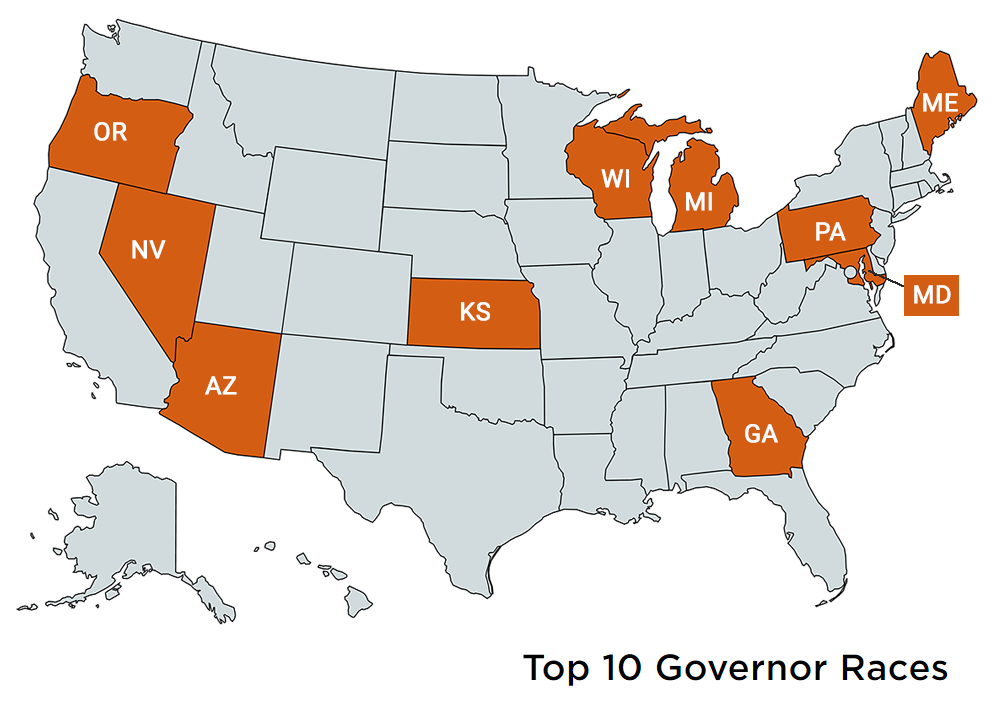
Young people in Wisconsin, which is in the top-5 of both of our rankings, make up 16% of the state’s population, have a 68% voter registration rate, and have demographic characteristics correlated with high voter turnout. In 2020, Wisconsin youth preferred President Biden by 23 points in a state that was decided by less than 1 percentage point; and in 2022 Democratic incumbent Governor Tony Evers will seek a second term; the race is rated as a toss-up in this perennial battleground state.
The race for the Arizona governorship currently held by term-limited Republican Doug Ducey should be competitive in this battleground state with a young, diverse electorate. The youth electorate in Arizona is larger and more diverse than the national average (29% are youth of color), and there is a high college attendance rate: 8% of the state’s population is enrolled in a higher education institution—which can create valuable opportunities for youth political education and engagement. In 2020, Arizona youth preferred President Biden by an overwhelming 31-point margin in a state that was decided by less than half a percentage point, and young Latinos played a critical role in the election.
Incumbent Kansas Governor Laura Kelly is a Democratic statewide official in a state President Trump won by 15 points in 2020, and analysts expect a close race in 2022. The state has an above-average youth population (17%), and as of June 2022, there were more young people registered to vote in the state compared to June 2018. In addition, an above-average 7% of Kansans are enrolled in college and 39% of the state’s nonprofits focus on youth, meaning there are various avenues to reach and engage young people.
The gubernatorial election for incumbent Democrat Gretchen Whitmer’s seat is expected to be highly competitive. Michigan has strong facilitative election laws, 64% of youth in the state are registered to vote, and young people had above-average turnout in both 2018 (33%) and 2020 (54%). In the most recent election, young voters’ 24-point preference for President Biden helped make the difference in a close race - the net youth vote for Biden was 194,000—higher than the statewide margin of victory of 148,000
Georgia, which is in the top 5 of both our rankings, emerged as a battleground state in 2020, and incumbent Republican governor Brian Kemp is expected to face both a tough primary challenge and a tough general election challenge. The state has strong facilitative election laws and nearly two in five nonprofits in Georgia focus on youth. Young people in the state make up an above-average 17% of the population, and they had one of the top 10 turnout rates of any state in the country in the 2018 midterms. Nearly half (46%) of Georgia’s young people are people of color, and Black youth especially had a decisive vote choice for Democrats in 2020. They may again play a critical role in this race where Stacey Abrams is the Democratic candidate.
The Nevada gubernatorial race is expected to be extremely competitive. The state also has some of the strongest facilitative election laws in the country and will be automatically mailing ballots to all registered voters in 2022, an election practice that was associated with higher youth voter turnout in 2020. Nevada youth preferred President Biden over former President Trump by 30 points in 2020—one of the highest vote choice differences in the country—which highlights their ability to decide close elections.However, the youth population has a below-average voter registration rate (52%) and of residents enrolled in college, presenting challenges to engagement.
The perennial battleground state of Pennsylvania, which is also in the top 5 of our Senate race ranking, will have a closely contested race for an open gubernatorial seat. Young people make up 16% of the state’s population, 69% of youth are registered to vote, and young people had above-average voter turnout in the past two federal elections. In 2020, youth voted for President Biden by a 27 point margin, making up for older voters’ preference for former President Trump and helping to swing the election.
Despite making up one of the smallest proportions of any state’s population in the country, Maine youth have historically influenced elections through strong voter participation. The state ranked among the top 5 in the nation in youth voter turnout in both 2018 (36%) and 2020 (61%), and 70% of youth are registered to vote. Maine is one of the most rural states in the country, which will make engaging youth in these areas—which are sometimes civic deserts with less political outreach and opportunities—especially critical in a close election for the governor’s seat held by Democrat Janet Mills.
The Maryland gubernatorial race is for the open seat currently held by Republican Larry Hogan, who is term-limited, in a state where President Biden won by more than 30 points in 2020. The state has some of the most facilitative election policies in the country, one its highest youth registration rates (70%), and higher than average college enrollment. The youth electorate in Maryland is also very diverse: about half (49%) of 18- to 29-year-olds are people of color.
Youth make up 16% of Oregon’s population, and a third of the state’s nonprofits focus on young people, which creates opportunities for outreach. Youth voter turnout has been far above the national average in recent elections: 39% in 2018, and 59% in 2020. Oregon’s 72% youth voter registration rate, owing to strong facilitative election laws, is one of the highest in the country. Despite the fact that Oregon’s gubernatorial race, for an open seat, is ranked as likely Democratic, these strong participation trends set the stage for high potential youth influence in 2022.
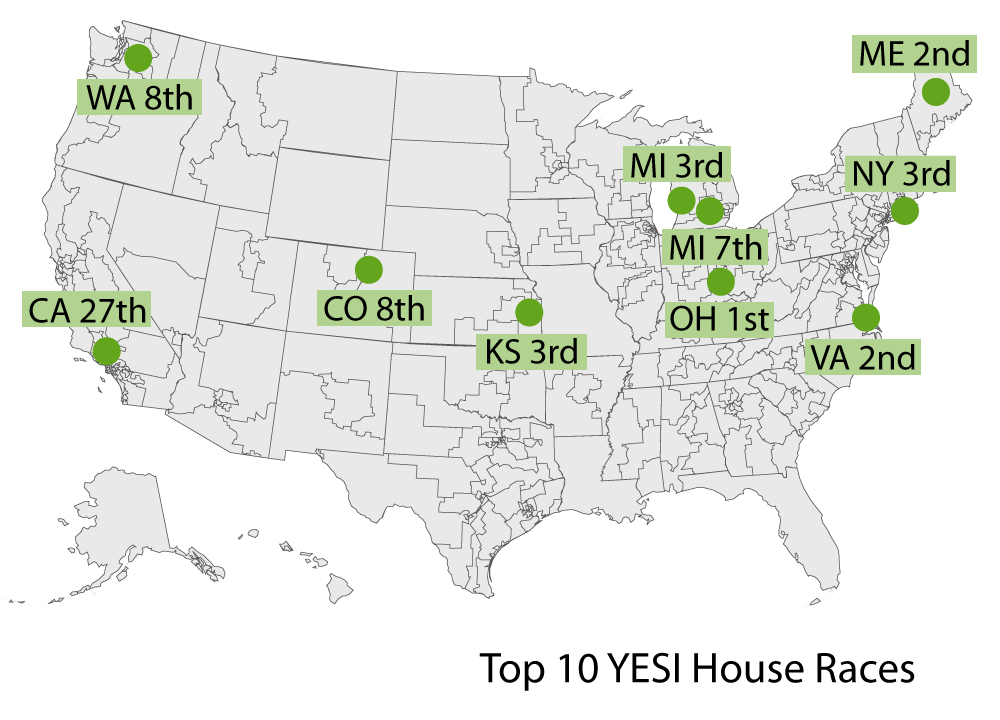
The Washington 8th includes a large swath of the central part of the state to the east of major cities like Seattle and Tacoma, and it expanded significantly after the recent redistricting. Youth turnout in this rural and exurban district was above average in 2018 (35%) and exceptionally high in 2020 (71%), and Washington state has strong policies that facilitate registration and voting. The race is expected to be highly competitive; Democrat Kim Schrier is running for reelection after winning in 2020 by less than 4 percentage points.
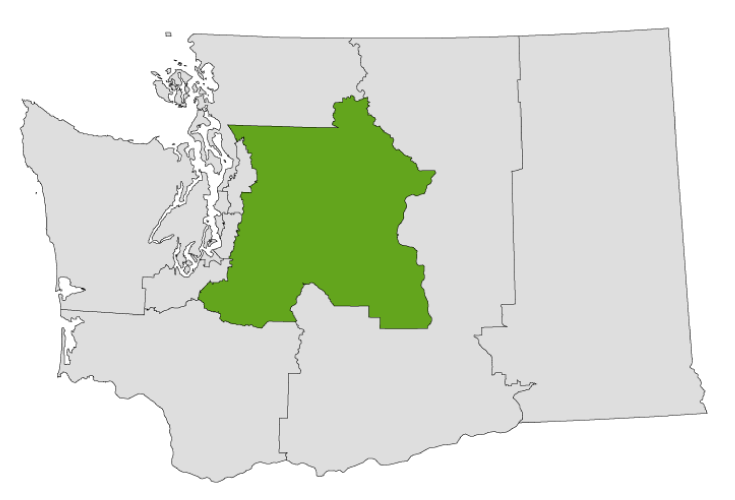
The Kansas 3rd is on the eastern part of the state, on the border with Missouri. Until the current redistricting cycle it had included Kansas City, but a new congressional map shifts much of the city to the Kansas 2nd, which is projected to mean a closer 2022 race for incumbent Democrat Sharice Davids in the Kansas 3rd. Young people make up 15% of the district’s population and recent youth turnout data at the district level is not available. At the state level, Kansas had below-average youth voter participation in 2018 and 2020, and does not have many facilitative voting policies, which may require more support from institutions and communities for young eligible voters.

The Virginia 2nd covers the southeastern part of the state, including Virginia Beach and Hampton Roads. The redrawn district now extends farther westward and has a young and diverse population. An above-average 19% of its residents are between the ages of 18-29, and 41% of residents are people of color—mostly Black. While youth in the district had below average turnout in both 2018 and 2020, Virginia has drastically improved its voting laws in recent years and now ranks among the states with the most facilitative electoral policies. The 2022 race is rated as a toss-up; Democratic incumbent Elaine Luria won by less than 6 percentage points in 2020.

The Colorado 8th is a brand new congressional district created following reapportionment. Stretching north of Denver, the new district encompasses three counties and its proportion of young residents (17%) is above average. In addition, nearly half of residents in the district are people of color, and 39% are Latinos. Colorado has historically had one of the highest youth voter participation rates in the country, and young people in what is now the new district had a 58% turnout rate in 2020.

The Michigan 3rd is in the western part of the state, notably including the city of Grand Rapids. The redrawn district now covers a geographically smaller area. Nearly one in five residents of the district are young people (19%) and more than a quarter are people of color; youth turnout was above average in both 2018 and 2020. The incumbent Republican Peter Meijer, won a relatively close 6-point victory in the last election and lost in this year’s primary, and the 2022 race is rated as a toss-up.

The Maine 2nd encompasses most of the state, including cities like Lewiston and Bangor, and remains largely unchanged from the previous congressional map. In 2020 it was one of only seven districts in the country where a majority of the electorate voted for President Trump but sent a Democrat to the House. The Maine 2nd has a mostly white population and a below-average median household income. It is also one of the most rural congressional districts in the country, which presents both challenges and opportunities to reach youth who may live in civic deserts.
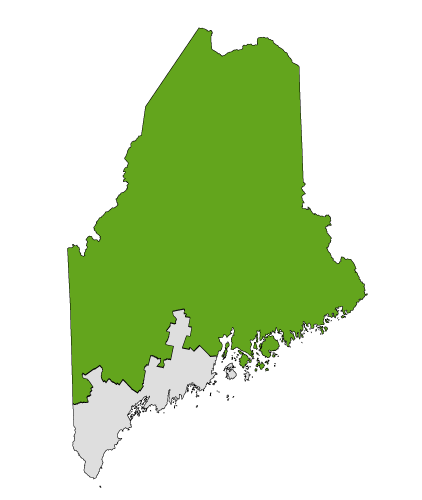
The New York 3rd includes part of the Long Island north shore and northeast Queens. The 2022 race is for a competitive open seat, and though young people make up a below-average 13% of the district’s population, the district’s average median household income of over $110,000 is one of the highest in the country, which often correlates with higher voter participation. More than a third of district residents are people of color, which makes it especially critical to engage these youth.
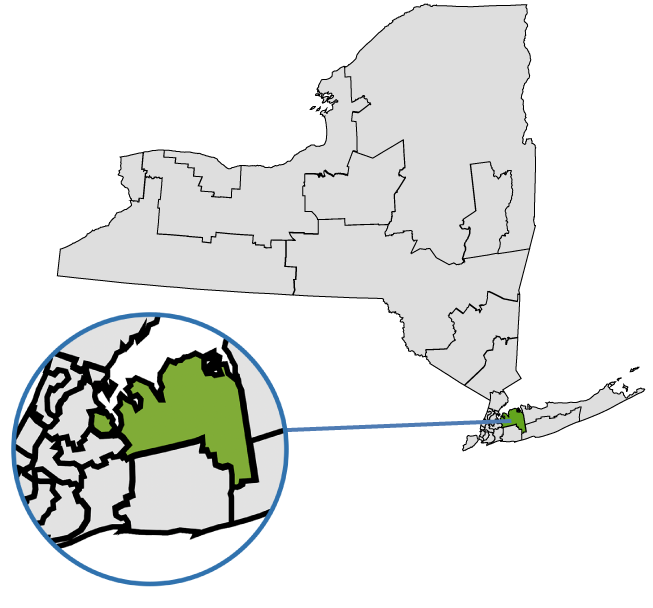
While the new Ohio congressional map remains under review, the redrawn Ohio 1st in the southwestern part of the state would now include all of the city of Cincinnati. That is projected to make the race for incumbent Republican Representative Steve Chabot’s seat a toss-up in a district where an above-average 18% of the population is made up of young people. Ohio does lack strong facilitative election laws, which may present challenges to youth voter registration.
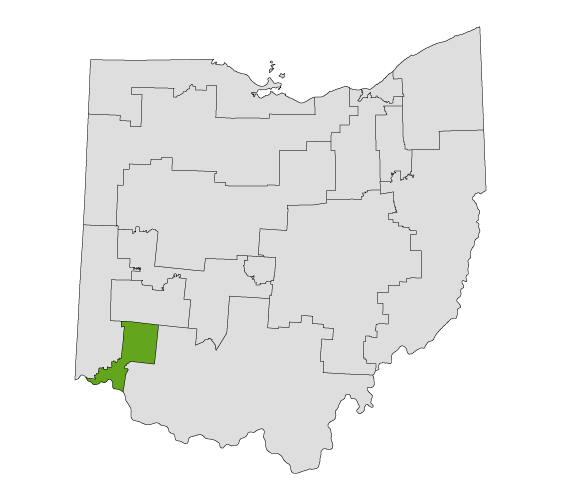
The redrawn California 27th is north of the city of Los Angeles and includes much of northern Los Angeles County. Republican Mike Garcia, currently the U.S. representative from the California 25th, is expected to face a close challenge after winning one of the closest 2020 House races: he prevailed by less than 400 votes. California’s election policies facilitate voting, and youth turnout among residents of the new district was an above-average 58% in 2020. Outreach to a wide range of youth will be critical: people of color make up two thirds of the district’s population (all ages), and 42% are Latinos.
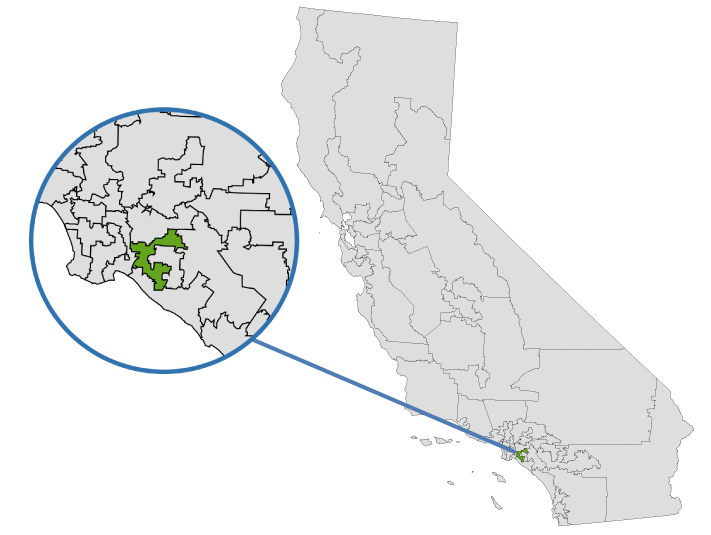
The redrawn Michigan 7th now takes up much of the central part of the state, including the city of Lansing, which was formerly part of the Michigan 8th. The MI-8’s Democratic Representative Elissa Slotkin, who won a close 2020 election there by less than 5 percentage points, is now the incumbent in the 2022 Michigan 7th race considered a toss-up. Young people make up an above-average 19% of the district’s population: more than 140,000 youth live there. Michigan has strong facilitative election laws and, as of mid-summer, led all states in increasing youth voter registrations compared to 2018.



